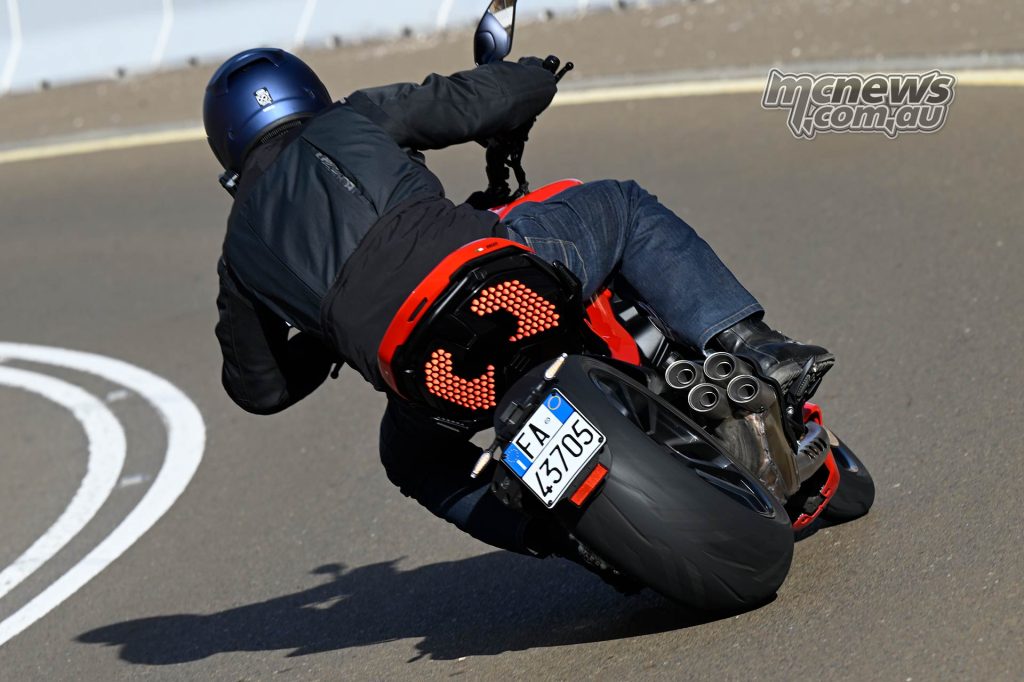Ducati Diavel V4 Review
By Rennie Scaysbrook
The world is full of many fine riding ribbons but few are as downright opulent as the Jebel Hafeet Mountain Road that borders Abu Dhabi and Oman in the United Arab Emirates.
This particular Arabian tarmac artery crams 60 perfectly paved, on-camber corners and 1300 metres of elevation into its 12 kilometres, and is about as far removed from regular road test grounds as one can possibly get.
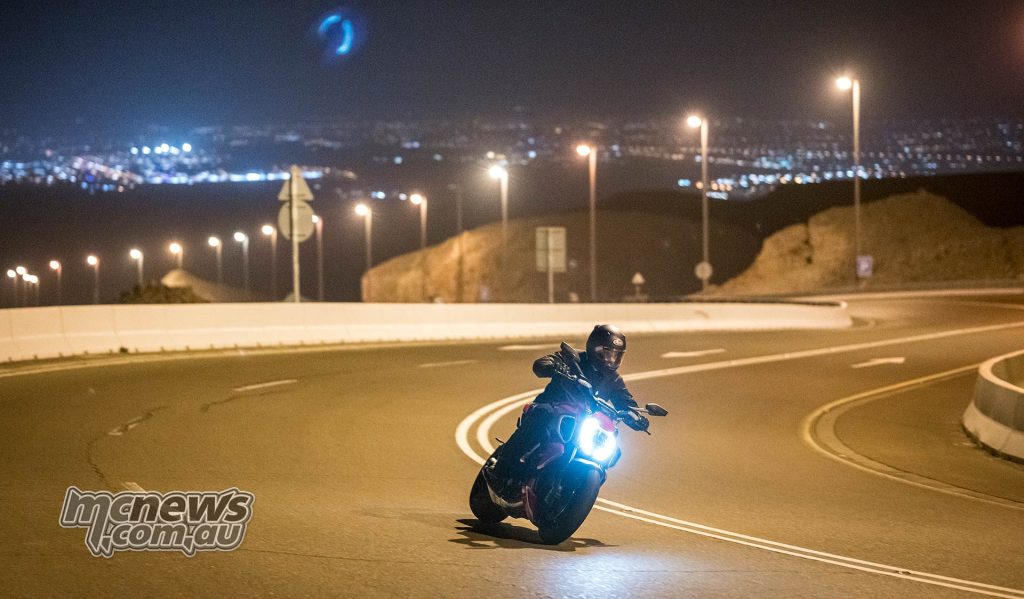
Still, I’m not one to complain, especially when the Abu Dhabi police are at the bottom, holding traffic and encouraging me to make the 2023 Ducati Diavel V4 move as fast as it can. Who am I to disobey police?
Thanks to the egging on from the cops, and the target of Ducati’s legendary test and development rider, Alessandro Valia, in front of me, I give the new Diavel all I dare. Over the next 12 kilometres, the extremely short hero knobs on the pegs are ground off, the speedo clocks 231 km/h, and I have moments where I figure the Diavel is more just a Streetfighter V4 S that’s let herself go a bit, rather than a motorcycle Ducati themselves dub as a cruiser.
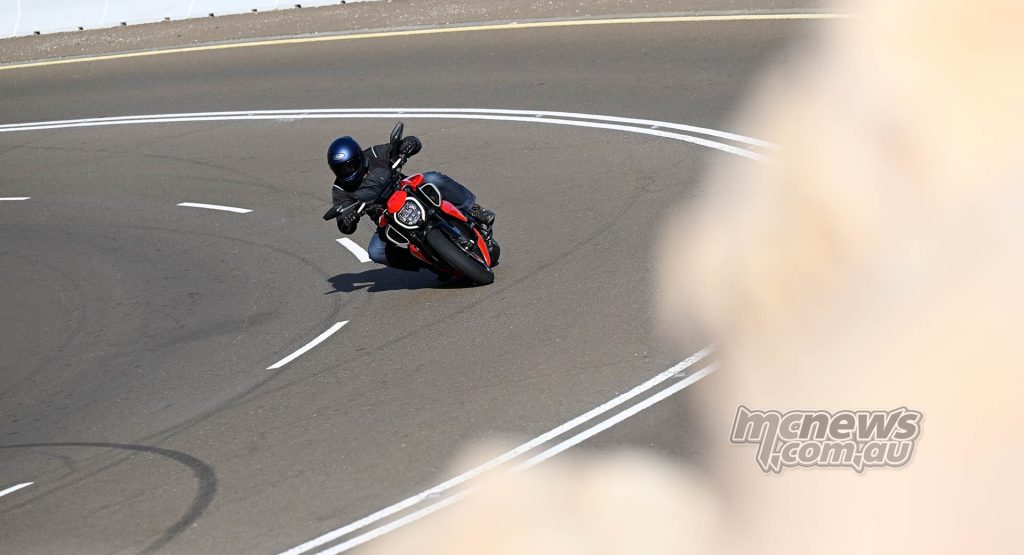
That’s quite a trick to pull, especially when you consider the measurements at play on the $41,000 Diavel V4.
A stumpy 790 mm seat height and that massive 240-section rear tyre are numbers more aligned with a custom Harley and it’s ’roid munching rider that cruisers relentlessly up and down the boulevard at Brighton Le Sands. These are figures are not normally associated with a sports nakedbike, and even Ducati themselves seem a little confused as to the Diavel V4’s designation, with staff freely telling me in Abu Dhabi this is “a comfortable nakedbike”, or my favourite, “this is our mega Monster.”
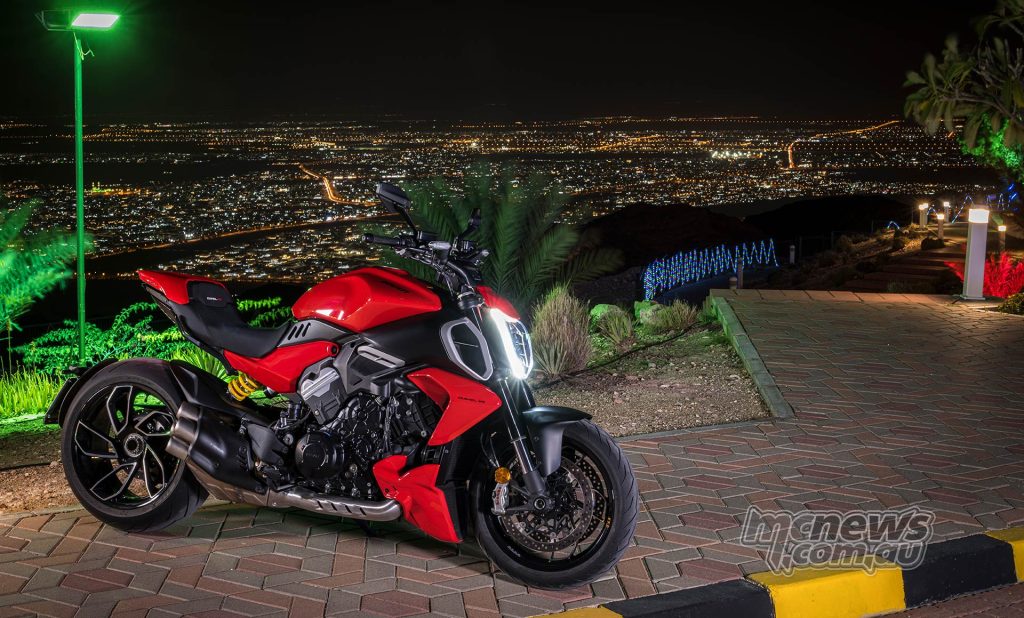
The Diavel has been around now since 2011 and has remained one of the least revised machines in the company’s line-up in that time. Ducati is barely recognisable to the company it was in 2011, going from MotoGP dunces to champions, bringing the cult classic Scrambler back in 2014 to being the first manufacturer to implement radar-assisted adaptive cruise control and blind spot detection software in a production motorcycle with the 2021 Multistrada V4 S.
In that time, the base-model Diavel has only seen two updates. In 2015 we got the twin-spark Testastretta motor and in 2020, the 1260 motor was implemented. In the middle of all this in 2016, we got the 1260-motor’d XDiavel, but that’s always been considered a separate machine.
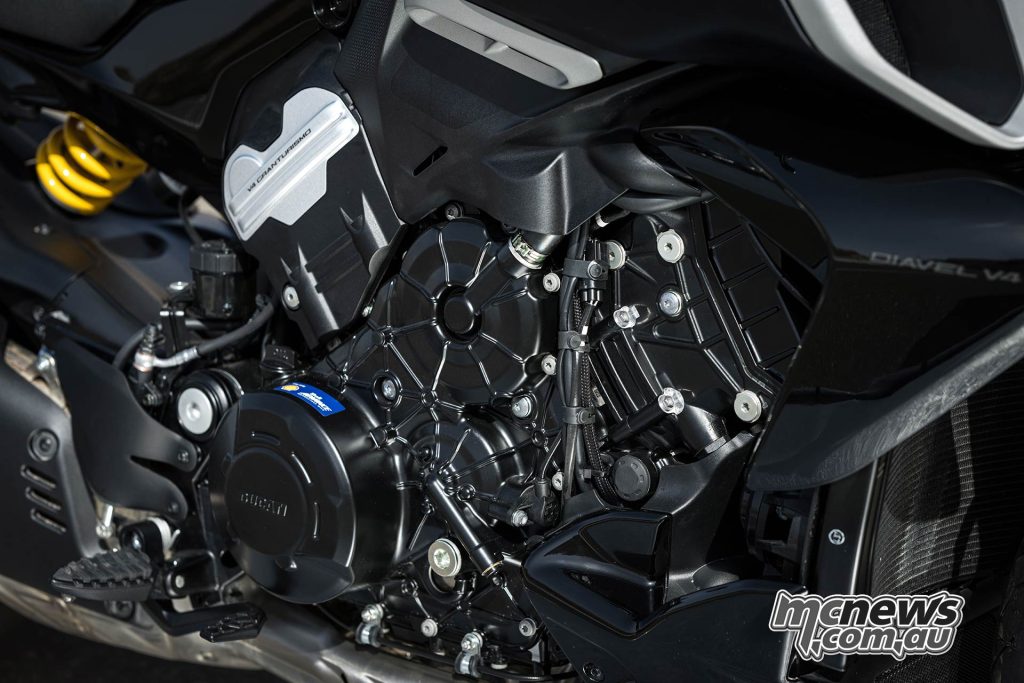
Fast forward to 2023 and the V4 revolution has firmly established itself within the Bologna factory’s walls. The 1158 cc Desmosedici Stradale motor with its counter-rotating crankshaft and twin-pulse firing order (whenever I hear Twin-Pulse I just think back to Troy Bayliss lighting up the first generation Desmosedici MotoGP machine of 2003) first saw the light of day in 2018 with the Panigale V4 S, and its evolution into Granturismo status was made formal when the Multistrada V4 S debuted.
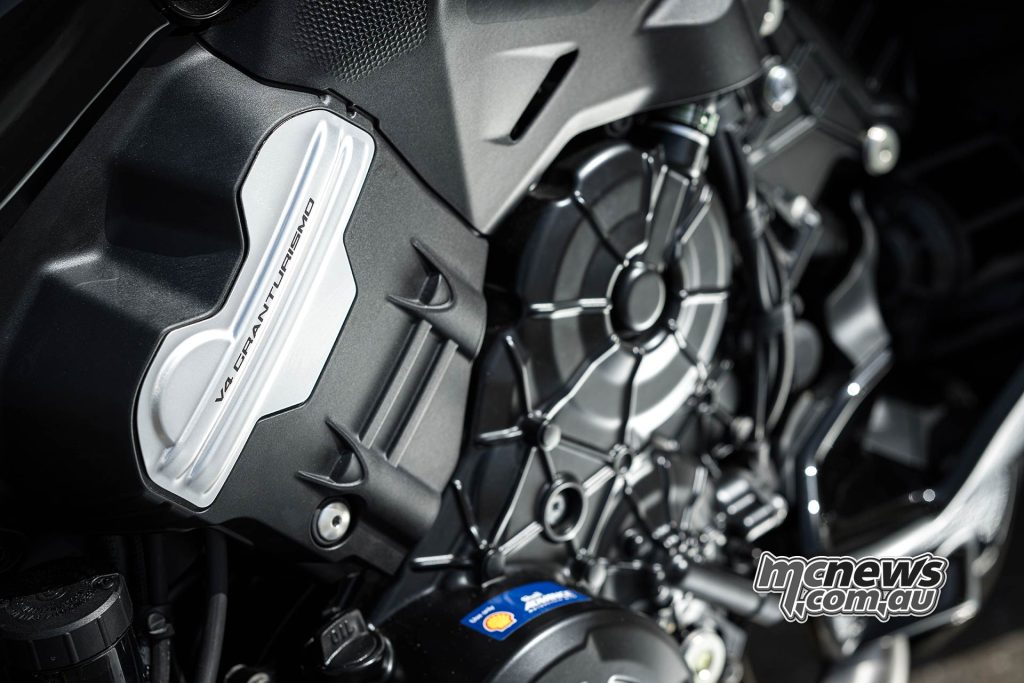
It’s the Granturismo edition we have nestled between the Diavel’s aluminium monocoque frame rails, although it’s not entirely identical. The new V4 motor that replaces the company’s previously ubiquitous 1260 L-twin can lay claim to producing a stout 166 horsepower (124 kW) delivered at 10,750 rpm, while torque is rated at 126 Nm at 7500 rpm. There’s fairly obviously different air intakes—those massive scoops sitting either side of the LED headlight—although less obvious is the altered air-box, cam-shafts and cam timing, and the shorter first gear than what lies in the Multistrada.
These differences are all aimed at producing more immediate punch from a closed throttle and low rpm, and you’re inner drag racer can be formally set free when you start playing around with the three-stage Power Launch platform inside the Diavel’s electronics suite.
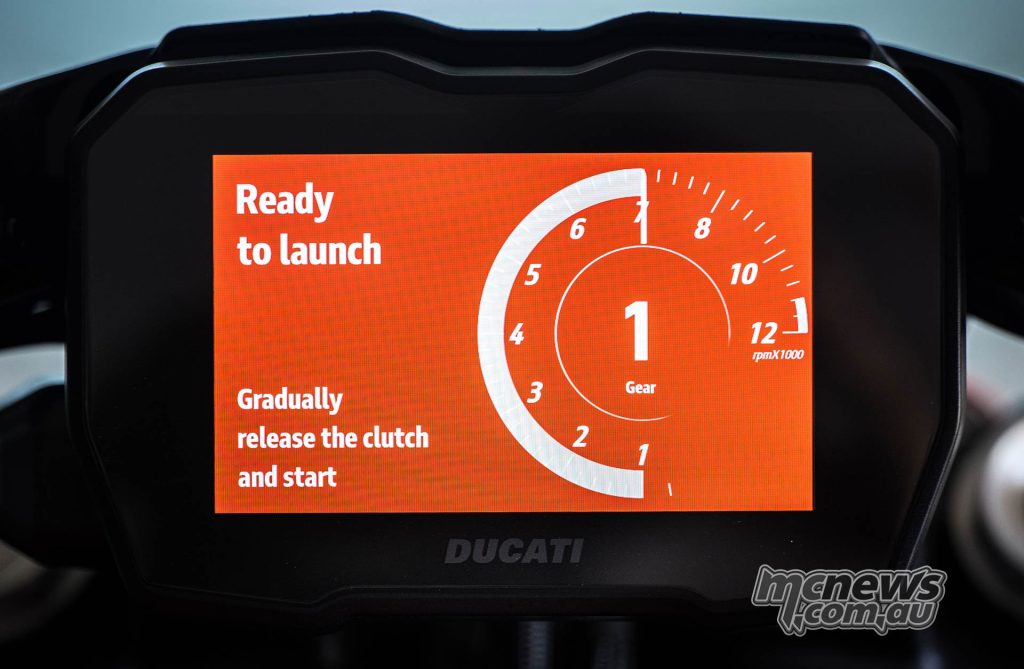
The removal of the L-twin from Ducati’s line-up is now complete for any machine the company sells over 1000cc. Think about that for a second: Ducati, those who swore by the grace of god at the altar of the twin-cylinder motorcycle for generations, now doesn’t sell a twin where the capacity is over 1000cc. These are quite the times we live in.
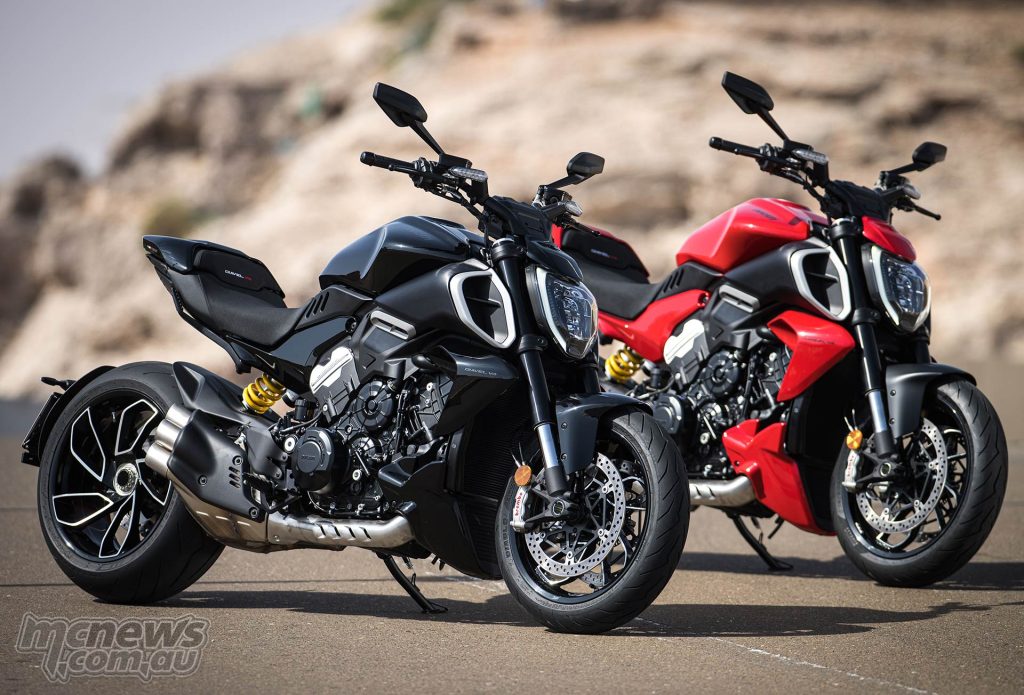
However, there’s good reason for this, as the Diavel V4’s Product Manager, Stefano Tarabusi, explains.
“For such high horsepower requirements, the only solution was to fit the V4 engine,” he says. “The way in which the V4 engine makes the power is more progressive than the Testastretta V-twin, but you can reach the higher numbers much easier with the V4. We have learned a lot with the development of this engine in the Multistrada V4 range, which of course we started when the first Panigale V4. We look at this V4 engine as a 360° engine: you have smooth torque in the lower rev range, which translates in a strong mid-range but at the higher end of the revs it continues to make power with no limits, much like a sportbike. This is very unique in this category.”
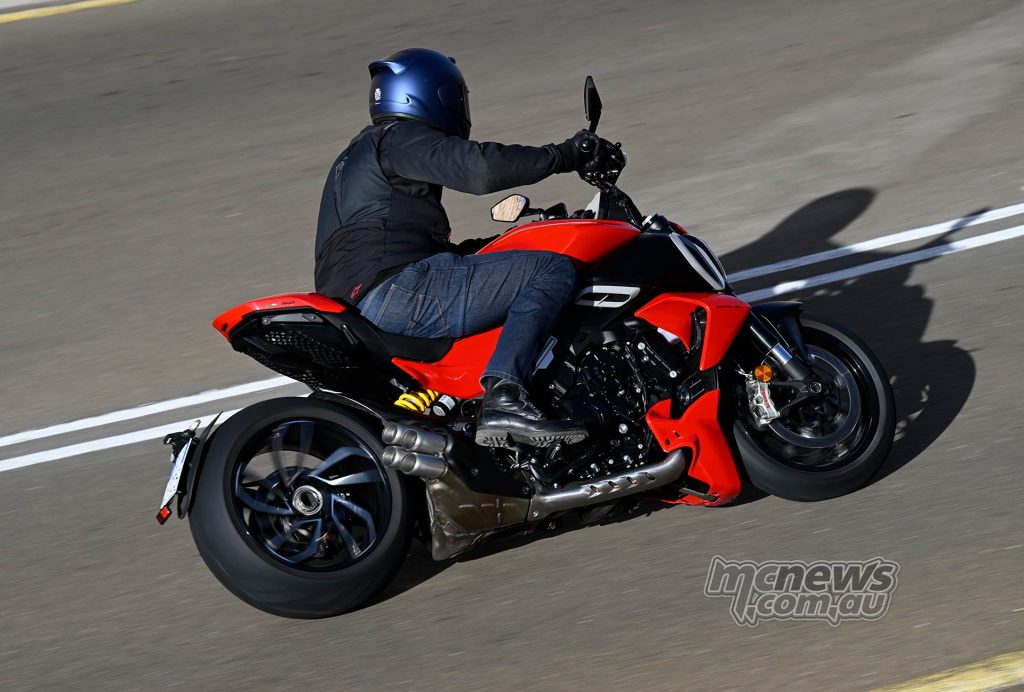
Unique is perhaps the only adjective suitable for the Diavel, for since the death of Yamaha’s mighty VMAX a decade ago, there really hasn’t been a competitor it can spar with (no, Triumph’s Rocket III doesn’t count). The new V4 doesn’t look overly different to previous iterations and perhaps Ducati has taken to heart the verbal beating from all those years ago when the polarizing 999, which has aged remarkably well, replaced god’s own design in the 998.
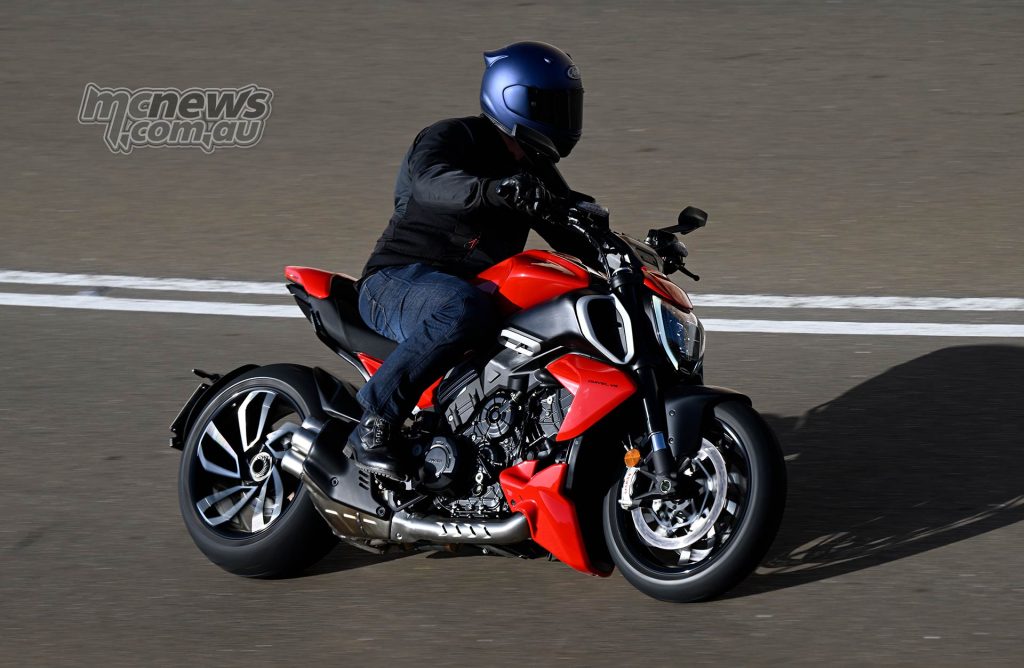
The original ethos and design lines from a decade ago are still present in the V4 edition—it’s still a muscular, angry brute of a bike, its slash cut wheels glistening in the night light, while the spectacular webbed LED rear light makes other lights that try to be cool look decidedly second rate.
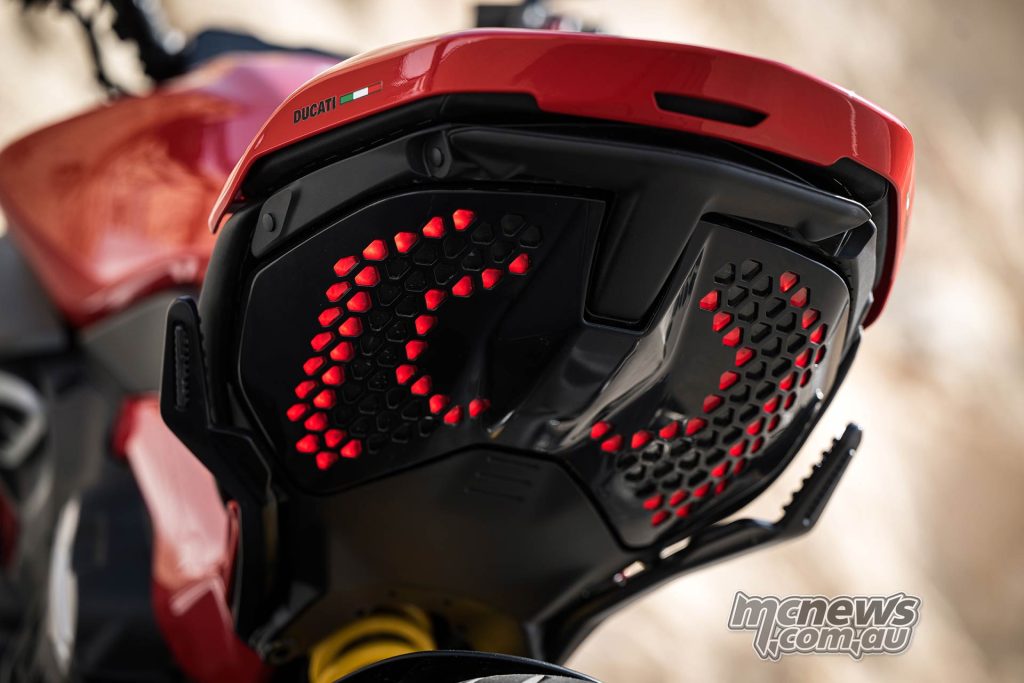
However, similar as it may outwardly be, there’s been much work on making the V4 better in every conceivable way to the old 1260. Much of the work has been centered around weight and dimension reduction, with Ducati claiming a 13 kg reduction in overall mass compared to the outgoing 1260. The largest of this comes from the motor, with a claimed five kilos removed. A further 4.7 kg has come off the monocoque frame, 2.4 kg from the sub-frame, a single kilo from the wheels and 0.5 kg from the front brake discs. All told, Ducati is claiming a 236 kg kerb weight with 20 litres of fuel running on a wheelbase down seven millimeters to 1593mm.
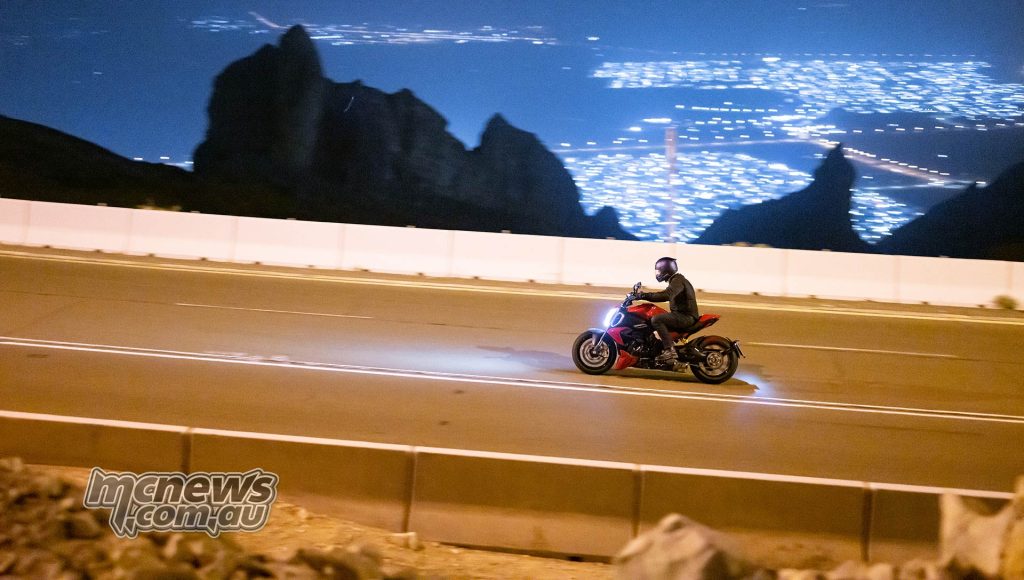
For the rider, the seat height has been increased 20 mm to 790 mm and the handlebar, which is now a two-piece unit and not a single handlebar as you’d expect, has been moved 20 mm closer.
The running gear consists of the same 50mm Marzocchi forks and shock as in 1260 guise, both fully adjustable and fully analogue. Ducati has baulked at fitting shiny gold electronic Ohlins on the Diavel V4 because they believe the weight penalty of around two kilograms wasn’t worth it, which is something I don’t agree with given the Diavel’s propensity for big mile days where having the ability to alter ride comfort and the press of a button would be a fine addition.
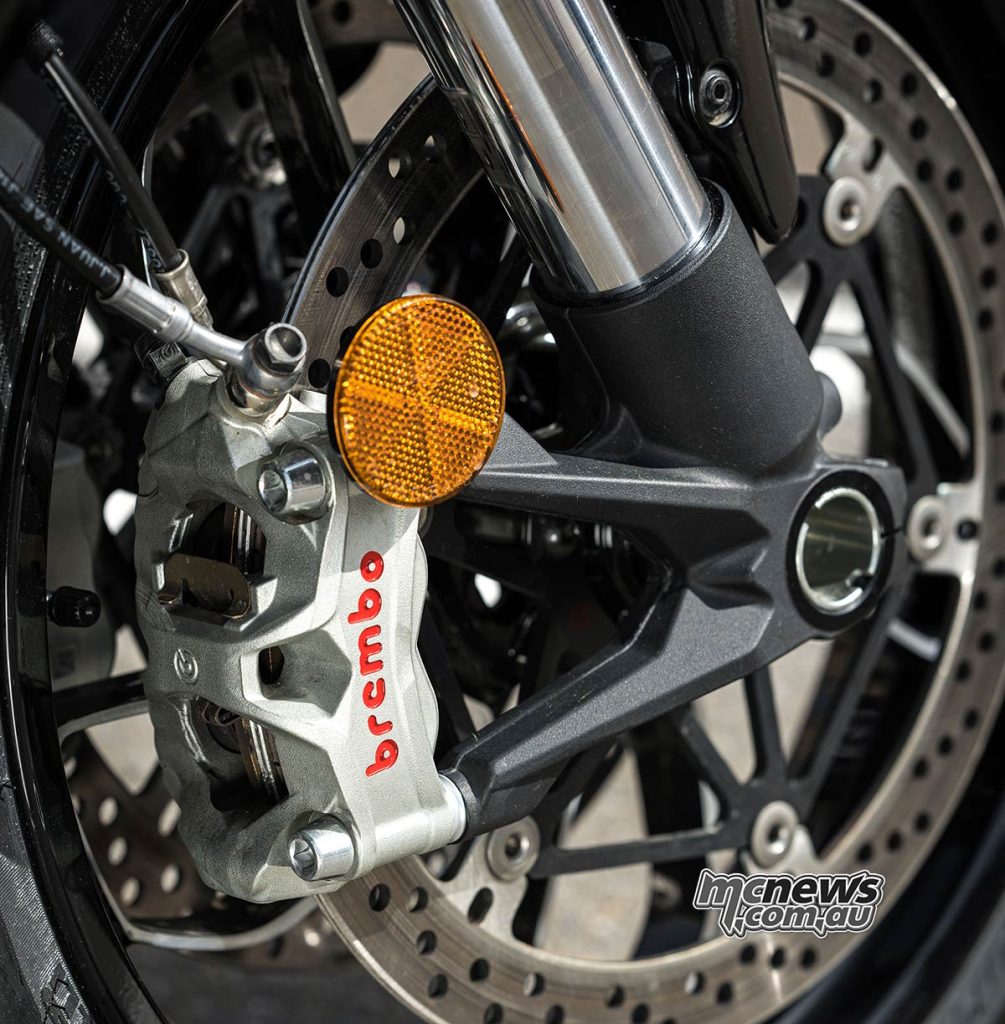
The Marzocchi’s do the job just fine, although at 90 kg I needed to ram the pre-load up front and rear a few turns to keep my massive arse from feeling like it was going to sink right through the suspension.
Helping you haul up from speed are Brembo Stylema monobloc calipers, raided from the first generation Panigale V4 S parts bin, replacing the aging Brembo M4.32 monobloc calipers and mated to Cornering ABS via the six axis IMU.
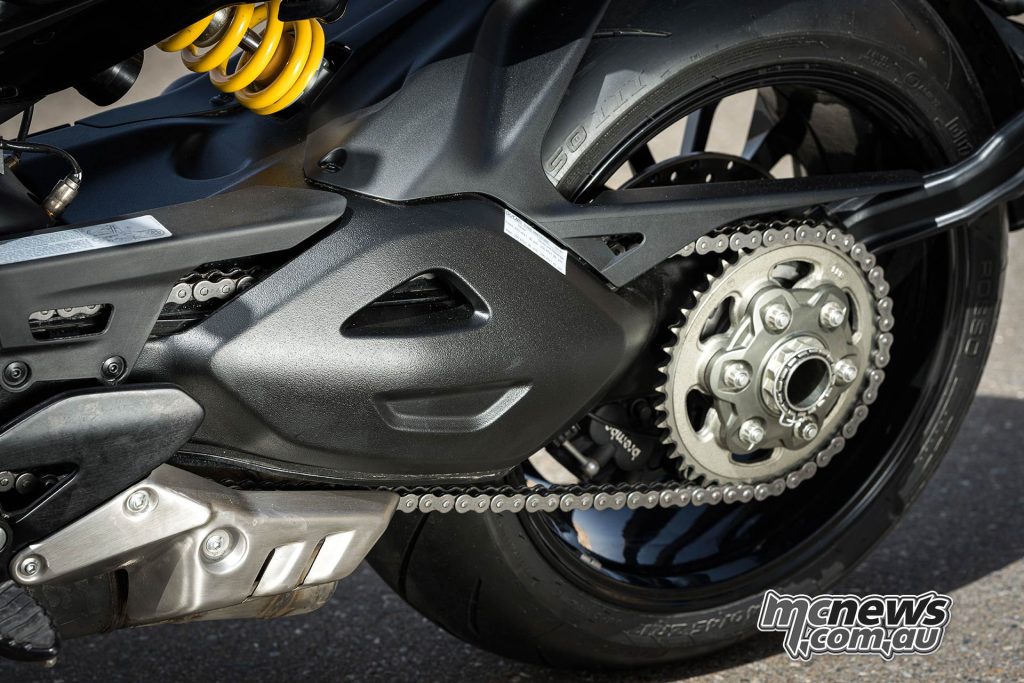
Speaking of electronics, you’ve got a five-inch TFT display, two power modes of 124 kW and 85 kW, four riding modes of Sport, Touring, Urban and a Wet, four-stage traction control and wheelie control, three-stage cornering ABS and power launcher, Ducati’s up-and-down quickshifter, and cruise control, but no heated grips—those you have to buy from the Ducati accessories catalogue.
The plethora of choice within the Diavel V4’s electronics allows you to tailor the ride exactly as you wish. The 85 kW level feels pretty anemic when you’ve got a bike as big and as long as this, and I suspect most who purchase this machine will try it once and then promptly forget about it.
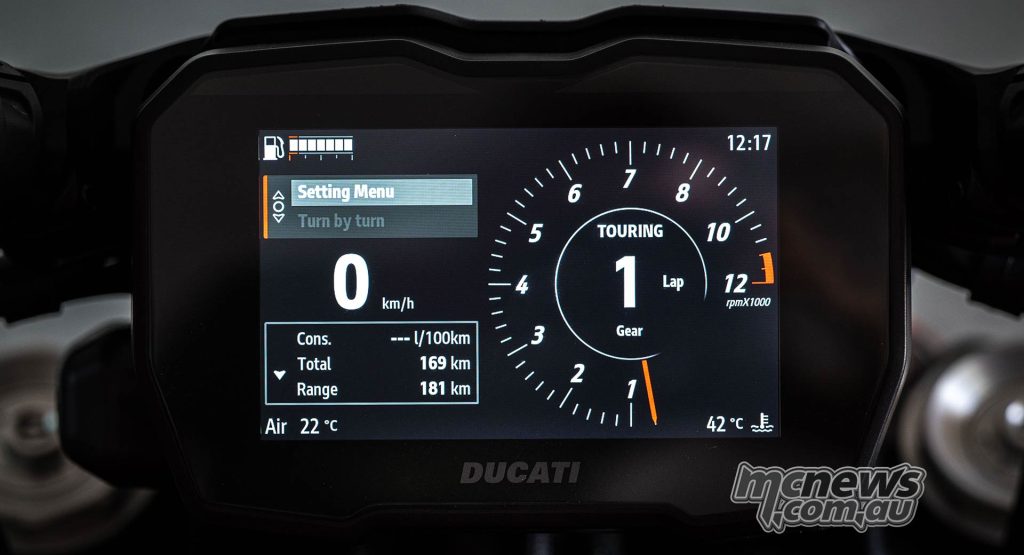
As I often find these days, I settled back one level after my desperate clinging to Valia up the Jebel Hafeet road and stuck with Touring mode’s slightly softer initial throttle response, but still with the full 124 kW on tap.
If you want to get real rowdy, have it in Sport mode and turn the wheelie control off, as wheelie control takes a little edge off the snappiness of the throttle regardless of what mode you’re in.
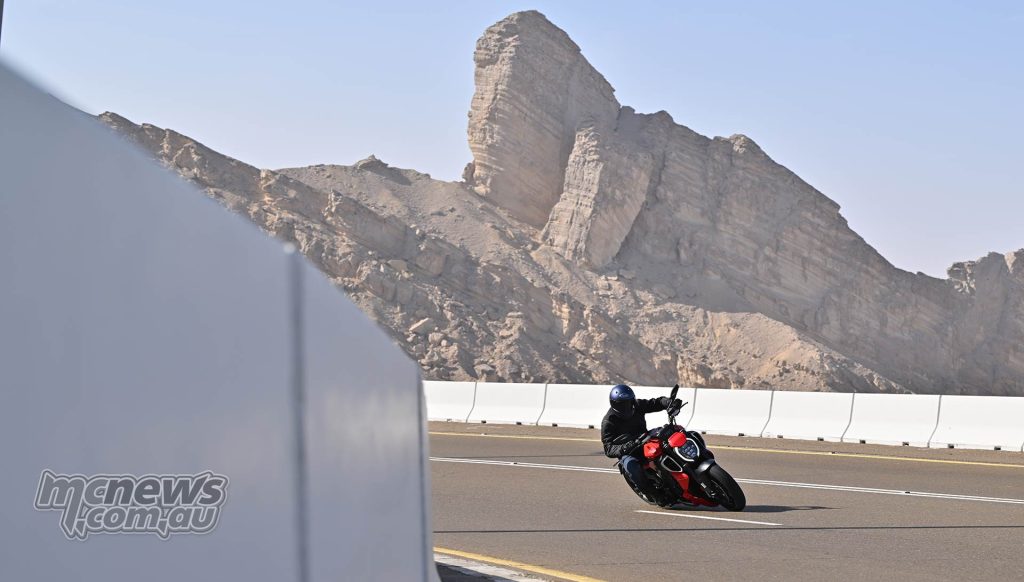
The Ducati Diavel V4 is a mechanical dichotomy of the senses, which is about as good a compliment as I can give it. Looking at it, it’s hard to believe it can be ridden as quicky as it can, but it has a civil side that many wouldn’t guess given its demeanor and aesthetic.
Ducati’s pulled a hell of a trick with this one.
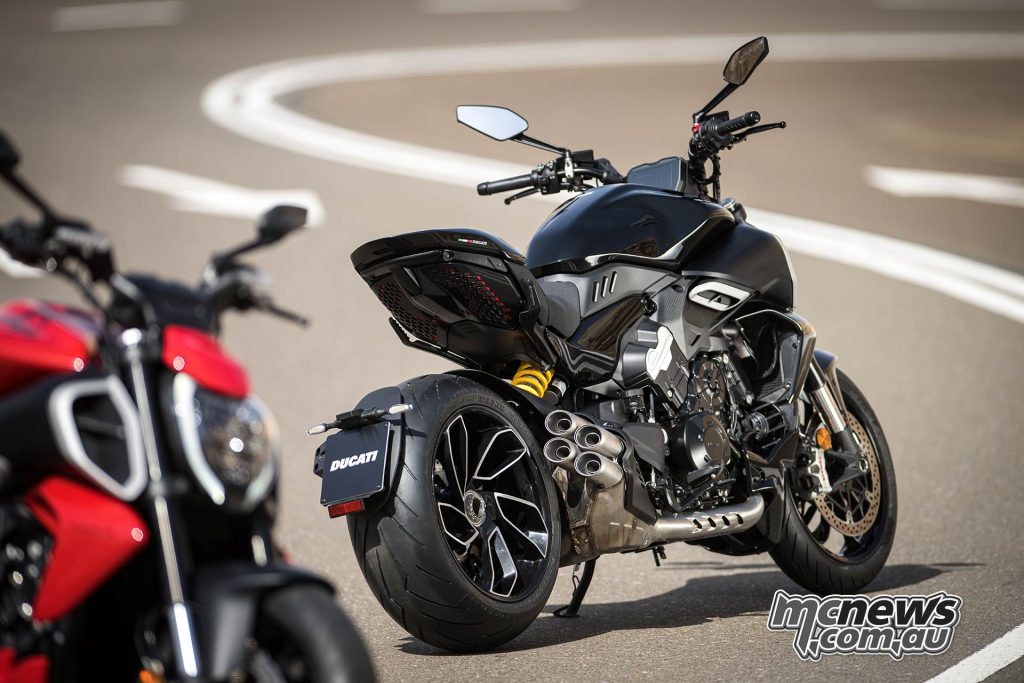
Ducati Diavel V4 Specifications
| Specifications | |
| Engine | 1158 cc Gran Turismo 90-degree, V4, Twin Pulse firing order counter rotating crank |
| Bore x Stroke | 83 x 53.5 mm |
| Compression Ratio | 14.0:1 |
| Power | 168 hp (124 kW) at 10,750 rpm |
| Torque | 126 Nm (93 lb-ft) at 7500 rpm |
| Induction | 46 mm eliptical throttle bodies, ride-by-wire |
| Exhaust | Stainless steel muffler, 4 exit pipes, 2 cats, 4 lambda probes |
| Transmission | Six-speed with Ducati up-down Quick-Shift |
| Clutch | Hydraulic slipper wet multi-plate |
| Final Drive | Chain 16/43 |
| Rims | Cast alloy, 3.5×17″ (F), 8×17″ ® |
| Tyres | 120/70-17 (F), 240/45-17 (R) |
| Frame | Aluminium monocoque |
| Front Brakes | 330 mm, Brembo Stylema four-piston calipers, radial master cylinder |
| Rear Brake | 265 mm disc, Brembo two-piston caliper |
| Dry weight | 211 kg (465 lb) |
| Kerb weight | 236 kg (520 lb) |
| Seat height | 790 mm (31.3 inches) |
| Wheelbase | 1593 mm (62.7 in) |
| Rake | 26 degrees |
| Trail | 112 mm |
| Fuel Capacity | 20 litres |
| Warranty | 24 months, unlimited kiometres |
| Minor maintenance Intervals | 15,000 km / 24 months |
| Valve Clearances | 60,000 km |
| ETA | April 23 |
| RRP | From $41,100 Ride Away |
